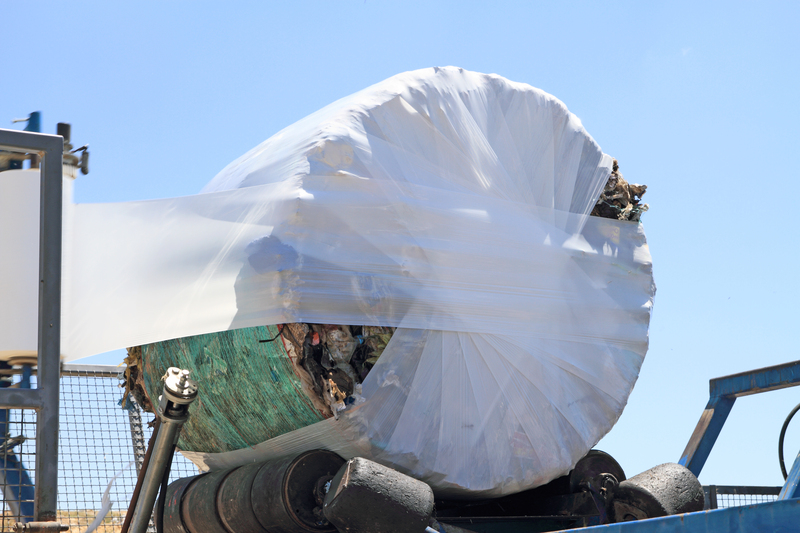Top Under-Recycled Household Item
Posted on 05/06/2025
Recycling is an essential part of sustainable living. Despite global efforts to reduce waste, some household items still fall through the cracks. These under-recycled items contribute significantly to landfill volumes and environmental degradation. Identifying and addressing these overlooked items is key to making a real impact. In this article, we will explore the top under-recycled household items, and provide actionable tips and takeaways for better recycling practices.
1. E-Waste: The Digital Dilemma
Electronic waste, or e-waste, consists of discarded electronic devices such as smartphones, laptops, and TVs. Despite the increasing digitalization of our lives, e-waste remains severely under-recycled.
Why Is E-Waste Under-Recycled?
- Lack of Awareness: Many people are unaware of how to properly dispose of e-waste.
- Convenience: Recycling electronics often requires special facilities, which may not be easily accessible.
- Data Concerns: Fear of data theft prevents individuals from recycling old gadgets.

2. Batteries: The Hidden Hazard
Batteries, both rechargeable and single-use, contain hazardous chemicals that can leak into the environment if not disposed of correctly. Unfortunately, they're often tossed into general waste bins.
Why Are Batteries Under-Recycled?
- Collection Challenges: Many areas lack convenient drop-off points for battery recycling.
- Limited Awareness: People are unaware of the environmental impact of improperly disposed batteries.
- Mix-ups: Batteries are often mistakenly thrown into the general recycling bin.
3. Textiles: The Closet Culprit
The fast fashion industry has led to a startling amount of textile waste. Clothes, shoes, and other textiles are frequently discarded without thought of recycling, contributing significantly to landfill mass.
Why Are Textiles Under-Recycled?
- Insufficient Programs: There are limited textile recycling programs in many regions.
- Awareness: People often don't consider textiles as recyclable.
- Quality Concerns: Worn or damaged textiles are often deemed unfit for donation and end up in the trash.
4. Plastics: The Persistent Problem
Plastics are ubiquitous in modern life, from packaging to household items. While some plastics are recyclable, many types remain under-recycled due to complexities in the recycling process.
Why Are Plastics Under-Recycled?
- Confusion: Different types of plastics have different recycling requirements, leading to confusion.
- Contamination: Food residues on plastic containers can render them non-recyclable.
- Cost: Recycling certain plastics is not cost-effective, leading to them being discarded instead.
5. Food Waste: An Overlooked Resource
Food waste is another significant category of household waste that is often overlooked for recycling. Composting is an effective way to recycle food waste, but it is under-utilized.
Why Is Food Waste Under-Recycled?
- Lack of Composting Facilities: Many homes lack the space or resources to compost food waste.
- Awareness: People are unaware of how to compost or the benefits of composting.
- Disposal Ease: It is easier for people to throw food waste into the trash than to compost it.
Pros and Cons of Recycling Under-Recycled Items
Pros
- Environmental Protection: Mitigates landfill use and reduces pollution.
- Resource Conservation: Conserves raw materials and energy.
- Economic Benefits: Creates jobs in the recycling and manufacturing industries.
Cons
- Cost: Initial setup for specialized recycling facilities can be expensive.
- Effort: Requires public education and participation.
- Limited Accessibility: Not all areas have adequate recycling infrastructure.
Tips for Better Recycling Practices
- Research Local Recycling Programs: Understand what can be recycled in your area.
- Segregate Waste: Keep recyclables separate from general waste to reduce contamination.
- Stay Updated: Follow guidelines for new and emerging recyclable materials.
- Educate: Share information with family and friends to improve collective recycling efforts.

Takeaways
- E-waste, batteries, textiles, plastics, and food waste are commonly under-recycled household items.
- Increasing awareness and improving recycling facilities can help mitigate this issue.
- Actionable steps include researching local programs, segregating waste, and spreading awareness.
Conclusion
Identifying and addressing the issue of under-recycled household items is crucial for creating a sustainable future. By focusing on e-waste, batteries, textiles, plastics, and food waste, we can make significant strides toward reducing environmental impact. Enhanced public awareness, proper waste segregation, and robust recycling programs are vital for this change. Every small effort counts, and together, we can pave the way for a greener planet.





